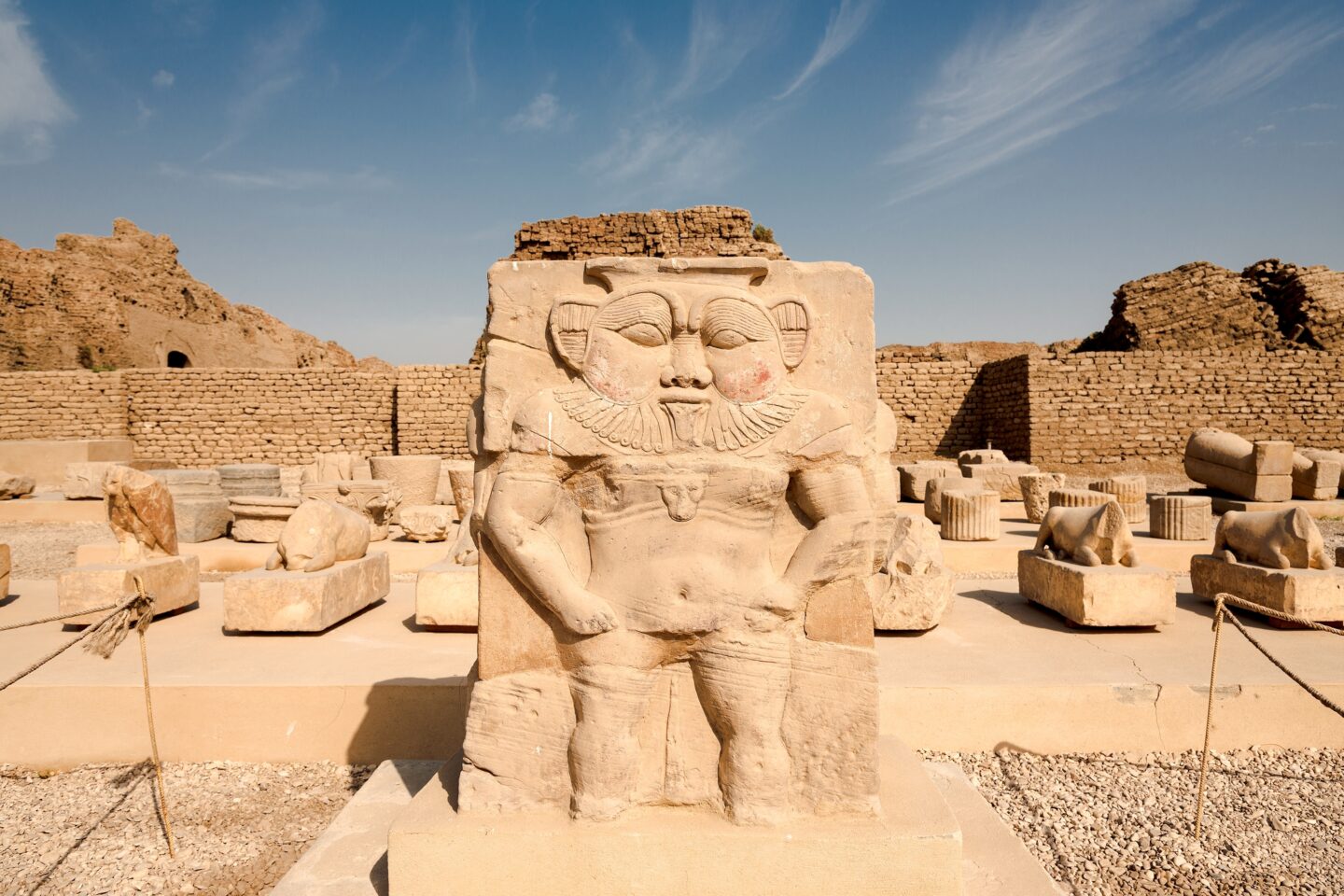
There is evidence that an ancient Egyptian cult was triggered by hallucinogens
Traces of a mixture containing several psychedelic compounds were found in an ancient Egyptian vase with a face resembling the deity Bes.
In a recent preprint of a study intended for peer review, scientists discovered direct evidence in a vase suggesting that the ancient Egyptian cult of the fertility god Bes used Syrian rue, Egyptian lotus, and royal jelly as stumbling blocks in religious ceremonies used. Ptolemaic-era vases from the Tampa Museum of Art in Florida were analyzed.
Bes (and his female counterpart Beset) were worshiped as protectors of households, that is, women and children, in the New Kingdom, Ptolemaic times, and Imperial Rome. Offerings to Bes were usually used for fertility. In the New Kingdom, Egyptians wore the image of Bes tattooed on their skin, and there is evidence that festivals were held in honor of Bes.
Researchers found traces of several plants and ingredients known for their hallucinogenic properties. “Our analyzes revealed traces of Peganum harmala, Nimphaea nouchali var. caerulea and a plant of the genus Cleome, all of which have traditionally been shown to have psychotropic and medicinal properties,” the researchers wrote. “Moreover, the identification of human fluids suggests that they are directly involved in these rituals.”
Courtesy of D. Tanasi et al., 2023
Other Egyptian cults and ancient Mayans also used Nimphaea nouchali var. caerulea for psychedelic purposes. The researchers also discovered cow DNA and speculate that the vases may have contained fermented milk or some other cow product. Traces of royal honey, or royal jelly, were also found in the vase, known both for its hallucinogenic effects and for enhancing sexual vitality (although the FDA warned street vendors would not mix it with Cialis). However, some of the benefits of royal jelly are scientifically proven.
“In addition, metabolomics and SR-μ-FTIR analyzes also revealed the presence of fruit-based fermented liquid and other ingredients such as honey or royal jelly,” the researchers write. “The identification of specific chemical compounds such as alkaloids and flavonoids provides insight into their psychoactive and therapeutic uses in ancient ritual practices. This multidisciplinary study sheds light on the complexities of ancient cultures and their interactions with psychoactive, medicinal, and nutraceutical substances. These insights contribute to our understanding of ancient belief systems, cultural practices, and use of natural resources, ultimately expanding our knowledge of past societies and their connection to the natural world.”
Besides the Egyptian or blue lotus, opium, tobacco and coca are the most popular psychoactive plants known to the ancient Egyptians.
Ars Technica reports that ceramic vases and similar vessels depicting Bes have been found and are now in museums and private collections around the world. Researchers speculate that they were carrying beer or an elixir. He is usually depicted with a bearded dwarf and tongue out, sometimes with a phallic symbol.
“The well-known image of Bes is a mixture of anthropomorphic and theriomorphic elements, part dwarf, part feline,” the report reads. “He emerged as a guardian figure from the magical realm of the demon world, and seems to have gradually attained an increasingly numinous status, until sporadically attaining divine worship in the Roman Imperial period.” As for his functions, Bes provided protection from danger during at the same time warding off damage and using his power to prevent evil. In critical circumstances, he also appeased nature, as described in the well-known myth of the Sun’s Eye, when he stemmed the wrath of the bloodthirsty goddess Hathor by serving her an alcoholic drink laced with a herbal drug and disguised as a deep, oblivious sleep over her.”
Chambers painted with the image of Bes were built at the Saqqara site near the Egyptian capital of Memphis, south of Cairo, but little is known about the religious specifics.
Extending the chemical sampling study to other examples from similar times would provide a clearer picture, the researchers said.

Post a comment: